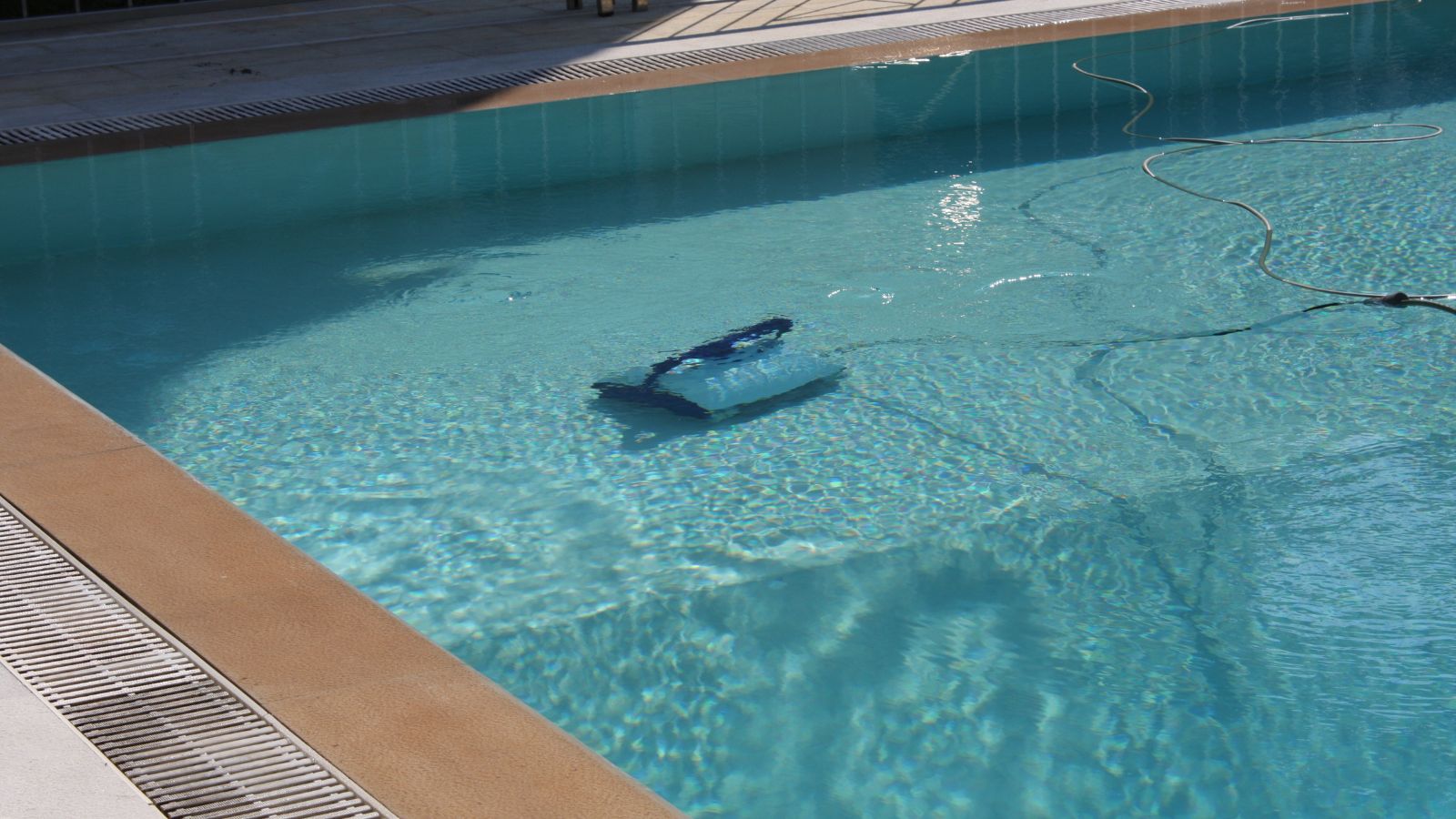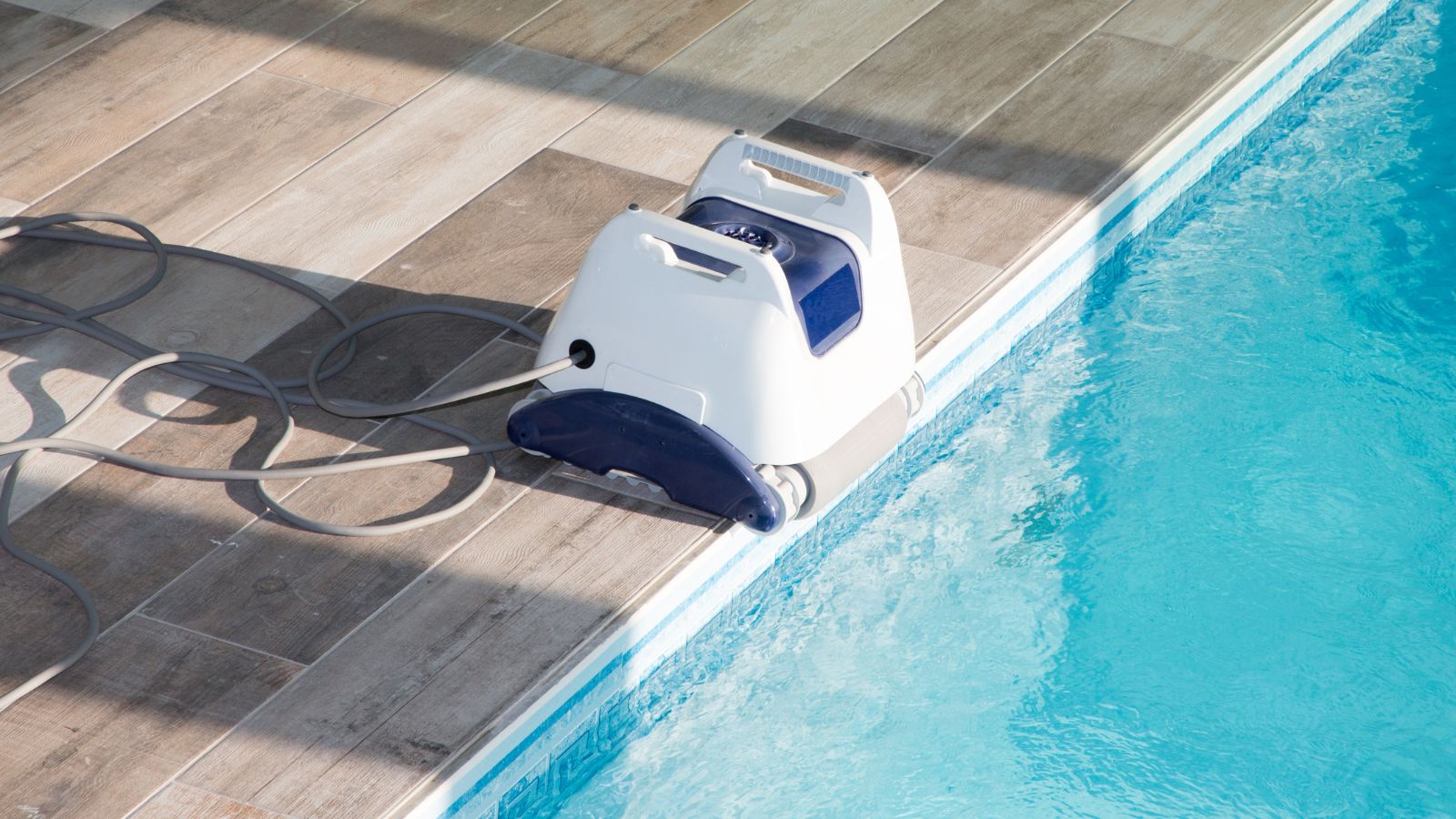
Pool robotic cleaners have changed how homeowners keep pools crystal clear. Instead of hours of scrubbing and vacuuming, these self-powered machines handle debris, fine particles, and algae film on their own, saving time, protecting your filter system, and keeping water sparkling with minimal effort.
Why Swimming Pool Robotic Cleaners Stand Out
Swimming pool robotic cleaners are self-contained, plug-and-play machines with their own motor, filter, and smart navigation. Instead of relying on your pool pump’s suction or pressure like traditional cleaners, a pool robotic cleaner uses low-voltage electricity to power drive motors and a built-in vacuum system.
Manual cleaning means using a pole and brush to scrub surfaces and a separate vacuum head to remove debris, it’s cheap but very labor-intensive.
Suction cleaners attach to your skimmer line and use your existing pump to pull debris into the pool filter. They’re affordable but can clog easily and increase filter wear.
Swimming pool robotic cleaners don’t stress your pump or filter. They scrub, vacuum, and filter independently, mapping the pool for thorough coverage and picking up fine debris like pollen, silt, and algae film. They also use aggressive rotating brushes to break up biofilm where algae starts, and premium models create their own micro-currents to circulate water and prevent dead spots.
Think of it like the difference between using your home’s central vacuum vs. a cordless robot pool vacuum that maps the room and picks up more dust on its own.
How a Pool Robotic Cleaner Saves Time
Smart navigation means no “missed spots.” Unlike suction cleaners that randomly wander, most pool robotic cleaner models use sensors or programmed routes to cover every inch of the floor, some even climb walls and scrub the waterline.
Independent filtration means less work for your main filter. Since debris gets trapped in the robot’s own basket, your skimmer basket and pump filter stay cleaner longer. Owners who used to backwash monthly often stretch it to once per season because the robot traps debris itself.
Quick-drop & go. There’s no need to prime hoses or babysit the process; you drop it in, push a button, and walk away. Emptying the basket takes 30-60 seconds, far faster than backwashing or cleaning out your main pool filter after running a suction cleaner.
Most owners go from brushing and vacuuming weekly to only occasionally touching up corners or steps. A single cleaning cycle (2-3 hours) removes up to 90-95% of fine particles, including pollen and silt that normally force a manual vacuum every weekend. Instead of 45-60 minutes of pole vacuuming, you spend about 2 minutes to drop it in and 1 minute to empty the filter.
Robot Pool Vacuum Effects on Water Quality
Cleaner water, faster. Robot pool vacuum systems often filter down to 2-5 microns, much finer than typical pool filters. This reduces cloudiness, pollen, and fine dust. By picking up particles before they enter the main filter, robots also lower the organic load that eats up chlorine. Many owners report 10-20% less chlorine use because there’s less microscopic debris for sanitizer to attack.
Less load on your pool pump. Since the robot doesn’t depend on your main circulation system, your pump doesn’t have to pull heavy debris through pipes and filters. This can mean longer pump life, fewer backwashes or cartridge cleanings, and lower energy draw with less wear on seals and impellers.
Better circulation. As swimming pool robotic cleaners move, they stir and mix water, helping prevent stagnant “dead zones” where algae can bloom. Owners often notice clearer, more balanced water because the robot is essentially a roaming micro-filter.
Who Should Invest in a Swimming Pool Robotic Cleaner
Busy homeowners who want “set it and forget it” cleaning benefit most. The traveler can even schedule cleanings remotely so the water isn’t swampy on return.
Large or irregular-shaped pools make manual vacuuming a big job, and robots shine here, especially in pools surrounded by trees, landscaping, or lots of pollen. They excel at fine debris that suction cleaners often miss, helping allergy sufferers by removing pollen and dust that can trigger symptoms.
Energy-conscious owners appreciate that pool robotic cleaners use very little power (about the same as a lightbulb) compared to running a big pump longer. Saltwater pool owners also like that robots don’t rely on the main circulation system, so they handle saltwater without extra wear and help keep salt/chlorine generator plates cleaner by reducing debris load.
If you have a simple, very small pool and don’t mind occasional manual vacuuming, the cost may not pay off. Perfectionists, however, love spotless waterlines and glassy water without hiring a pro.
Top Features in a Pool Robotic Cleaner
Skip the marketing fluff and pay attention to what actually matters. Brush type and quality make a big difference: rubber or PVC brushes work fine on smooth surfaces, while PVA or other high-grip brushes are better for tile or slippery finishes. Dual active brushes at the front and back give the best scrubbing power. Filter flexibility is another key factor, look for models with swap-out filters or fine and ultra-fine cartridges so you can adjust for the season, using coarser filters when leaves are falling and finer ones for pollen or dust. If your pool gets a lot of sand or pollen, choose a unit that filters down to 2 microns; most competitors only claim “fine” without giving numbers.
Full wall and waterline cleaning is essential if you want complete coverage. A swivel or tangle-free cable keeps the robot from getting snarled, and a lightweight body or assisted lift mode matters if you’ll be pulling it out often. Programmable schedules are handy if you want the cleaner to run while you’re away, while app control and smart mapping are nice extras but not necessary unless you like tech features. Fancy “AI” claims are usually overhyped, what really matters is brush pressure and how fine the filter can capture debris.
When a Robot Pool Vacuum Is Worth It
A robot pool vacuum is often worth it if you pay for weekly pool service, since it can reduce service frequency or let you handle cleaning yourself. It also makes sense if you currently run your pump longer just to power a suction cleaner, robots cut that energy cost. They shine in pools with lots of debris, trees, or dust that clogs filters, and for anyone who values time and doesn’t want to spend hours cleaning. The investment can pay off quickly: weekly service at about $120 a month means a robot can cover its cost in eight to twelve months. Cutting pump run time by roughly four hours a week at $0.20/kWh can save $80-120 a year, and filter cartridge or bag replacements often drop by about 30%.
On the other hand, it may not be worth the cost if you have a small, simple, screened-in pool with minimal debris, if you actually enjoy manual cleaning, or if your budget is very tight. Good robot pool vacuum models start around $600-$1,200, and premium versions can reach $1,500 or more. For a screened 10×20 plunge pool with almost no debris, the return on investment can stretch beyond five years.
Maintaining Your Swimming Pool Robotic Cleaner
After each use, rinse the cleaner with fresh water, not pool water, to remove salt, chlorine, and fine grit that can degrade parts. Empty and clean the filter basket every time so debris doesn’t dry and harden, and let it dry before storing to avoid mildew smells. Always unplug the unit before lifting it out of the water to protect the motor seals.
Check brushes and tracks regularly and replace worn parts to maintain traction and scrubbing power. Inspect the power cord for kinks or cracks, and don’t leave swimming pool robotic cleaners soaking in the pool long-term since extended exposure can wear seals and electronics. Store it out of the sun and weather; UV and heat shorten lifespan, so a caddy, shade, or indoor spot works best. Off-season, keep it indoors rather than in a hot shed or cold garage.
Every couple of years, grease the O-rings or have a shop check the seals to keep electronics safe. Many owners also get a quick seal and motor check at the start of each season. With basic care like this, pool robotic cleaners often last five to seven years or more, sometimes over a decade, which makes for a solid return on investment.







